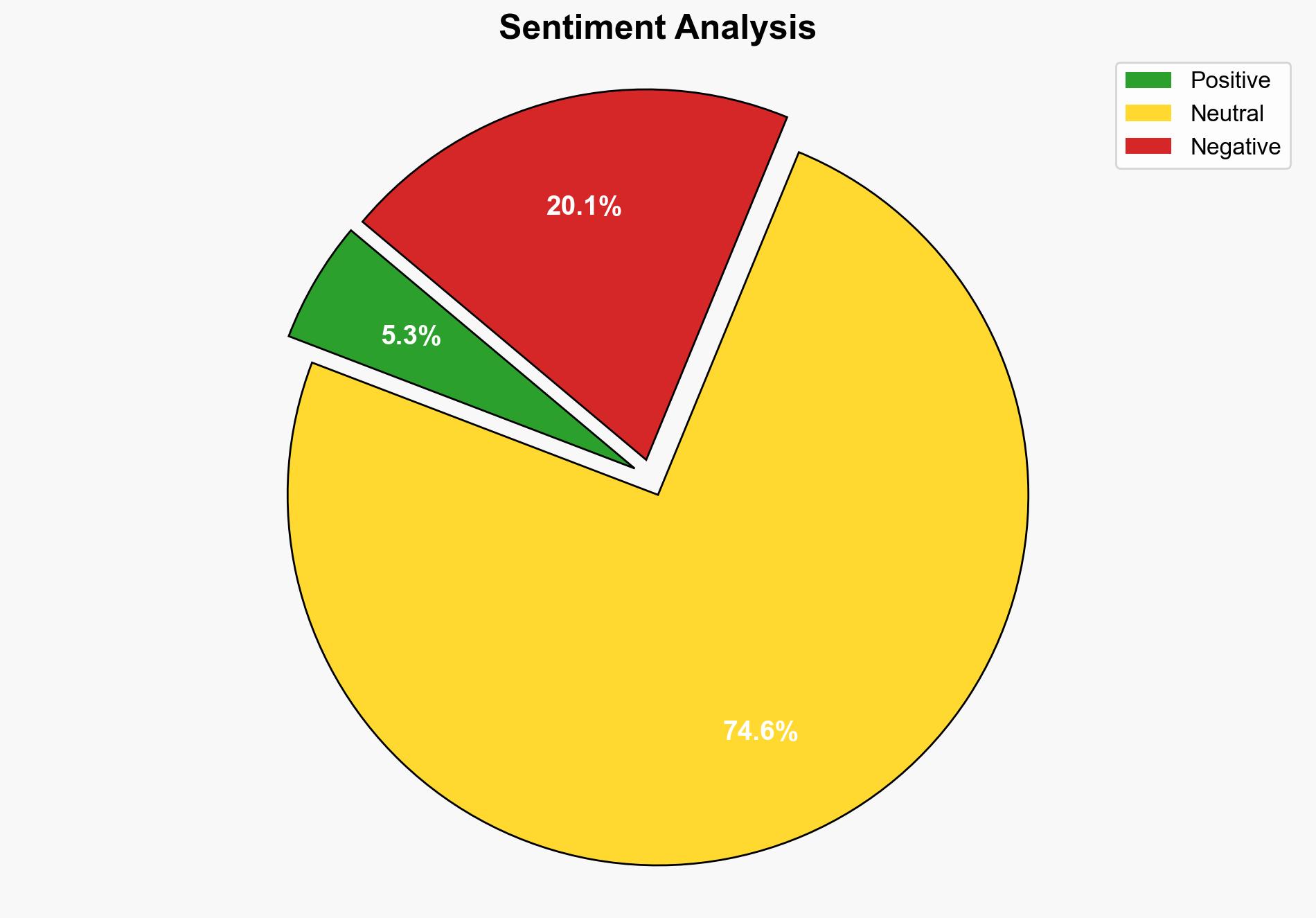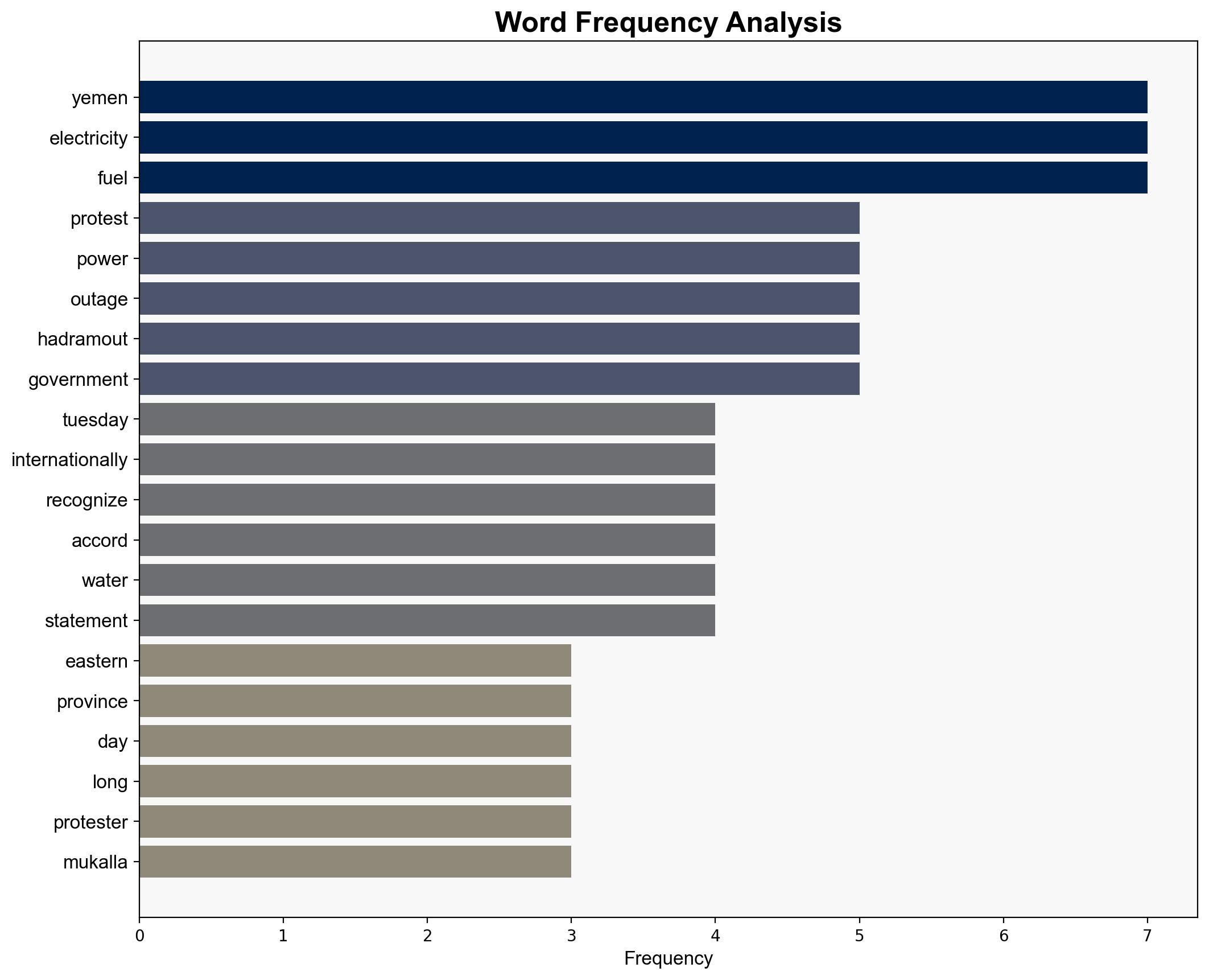Protests in an eastern Yemen province intesify over prolonged power outages – ABC News
Published on: 2025-07-30
Intelligence Report: Protests in an Eastern Yemen Province Intensify Over Prolonged Power Outages – ABC News
1. BLUF (Bottom Line Up Front)
The protests in Hadramout province, Yemen, are primarily driven by prolonged power outages and fuel shortages, exacerbated by internal corruption and economic decline. The most supported hypothesis is that these protests are a spontaneous reaction to deteriorating living conditions, with a moderate confidence level. It is recommended to monitor the situation closely for signs of escalation or external influence, which could destabilize the region further.
2. Competing Hypotheses
Hypothesis 1: The protests are a spontaneous grassroots movement driven by local grievances over power outages, fuel shortages, and economic hardship. This is supported by eyewitness accounts and reports of deteriorating living conditions.
Hypothesis 2: The protests are being manipulated or influenced by external actors, such as political factions or foreign entities, to destabilize the region and undermine the internationally recognized government. This is less supported but remains plausible given Yemen’s complex political landscape.
3. Key Assumptions and Red Flags
– **Assumptions for Hypothesis 1:** The protests are primarily driven by local grievances without significant external influence. This assumes a lack of coordination with broader political agendas.
– **Assumptions for Hypothesis 2:** External actors have the capability and motive to exploit local discontent for political gain.
– **Red Flags:** The arrest of journalist Abduljabar Bajabeer could indicate attempts to control the narrative, suggesting potential manipulation.
– **Inconsistent Data:** Lack of detailed information on the role of local tribal dynamics and their influence on the protests.
4. Implications and Strategic Risks
The protests could lead to increased instability in Hadramout, potentially spreading to other regions. Economic decline and service interruptions may exacerbate humanitarian conditions, increasing the risk of radicalization and recruitment by extremist groups. If external actors are involved, this could lead to a broader geopolitical conflict involving regional powers.
5. Recommendations and Outlook
- Monitor communications and financial flows for signs of external influence.
- Engage with local leaders to address grievances and prevent escalation.
- Scenario Projections:
- Best Case: Protests lead to government reforms and improved services.
- Worst Case: Escalation into widespread violence and regional instability.
- Most Likely: Continued protests with sporadic violence and limited government response.
6. Key Individuals and Entities
– Salem bin Mubarak (Eyewitness)
– Ahmed Al Dahdouh (Security Official)
– Abduljabar Bajabeer (Journalist)
– Petromasila (Fuel Supplier)
7. Thematic Tags
national security threats, regional focus, economic instability, civil unrest





